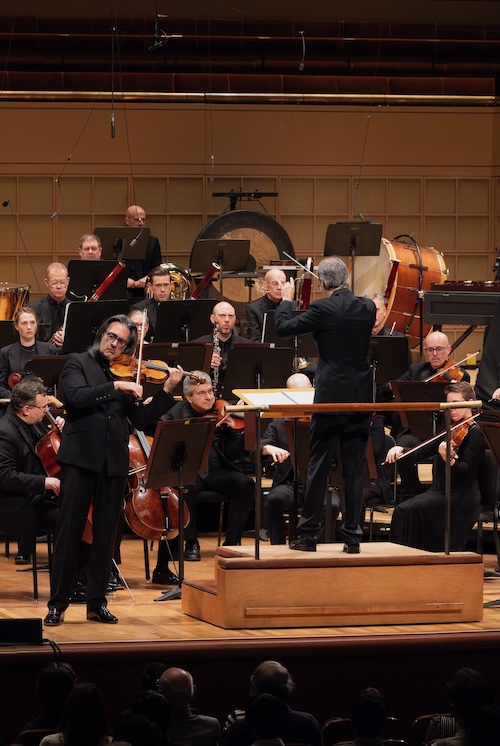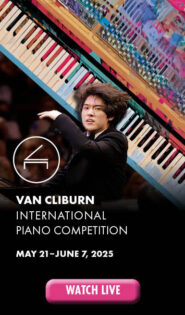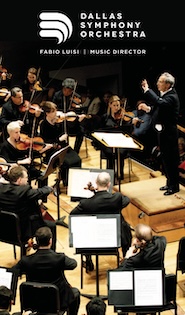Dallas Symphony marks 125th birthday with vigorous Beethoven, Shostakovich

The Dallas Symphony Orchestra marked a historic milestone Thursday night, celebrating the exact 125th anniversary of its first concert May 22, 1900 (as the Dallas Symphony Club). The intriguing assortment of works on the evening’s program, led by Ilan Volkov, aptly illustrated the breadth of the DSO’s repertoire over the decades.
Dallas-born composer and writer Kyle Gann based his Serenity Meditation (after Ives) primarily on motives from Charles Ives’s song “Serenity,” along with two other Ives songs. The work is slow and hypnotic, with delicate dissonances, opening with a quiet percussion pattern and featuring a prominent celeste part played by Anastasia Markina.
Above this ostinato, waves of slow, static strings and woodwinds enter and fade out. Themes in cellos and horn migrate to second violins and violas, then to a flute solo warmly played by Hayley Grainger. The mild counterpoint expands to bassoons and slow-moving first violins. Percussion added bells in the middle and again at the end, while exposed passages in flute and oboe rose and fell over Gann’s gentle waves in this pleasantly intricate work.
For Shostakovich’s formidable Violin Concerto No. 1, the soloist was Leonidas Kavakos. Cast in four movements instead of the usual three, the piece begins with a slow Nocturne, in which the composer’s rich orchestration featured clarinets, harp, celeste, and tam-tam.
From his first notes, Kavakos’ supple tone was radiant yet unsentimental. His bow control was superb and his smooth playing appeared effortless. He cleanly executed the violin’s sinewy lines and challenging double-stops, displaying his timbral flexibility both with and without a mute.
The ensuing movement, a fiery Scherzo, began with buoyant solo lines against low winds and featured demanding solo dance tunes that shift from violin to colorful winds and brass and back to violin. Even in dark melodic passages, Kavakos coaxed a brilliant, noble tone from his instrument.
A slow unwinding Passacaglia in F minor dominates the third movement, with its monumental introduction in low strings, low brass, and timpani. Kavakos’s sound was full and sweet in the virtuosic cadenza, invoking folk dance tunes while accelerating toward the end.
This moved directly into the finale, marked with Beethoven’s favorite tempo “Allegro con brio.” Volkovdeftly coordinated the solo playing with Shostakovich’s lithe and jumpy orchestral parts, while Kavakos’s lightning-fast playing lit up the hall. Afterward, the soloist was brought back for two well deserved ovations
After intermission, the orchestra inserted a special birthday surprise: a “concert galop” titled Allons donc by Hans Kreissig, the Dallas Symphony Club’s first conductor. Kreissig, a student of Arthur Sullivan, was a cultural pillar in Dallas from 1884 till his death in 1929. Snare and bass drums, along with trumpets, drove the galloping rhythms of this charming bon-bon, which concluded the inaugural May 1900 performance.
For the orchestra’s reading of Beethoven’s Symphony No. 3 “Eroica,” the first movement was overly silky, leading to moments of cloudy ensemble in the exposition. Volkov overlaid effective nuances to most of the themes, but his suave approach softened the urgency of the development section and its rhythmic and harmonic violence.
In the funereal second movement, this approach was more successful, sweetly delivering melodic lines and timbral colors. The orchestra was majestic in the fugato of the march’s first return. The Scherzo was buoyant, with Volkov effectively rendering the syncopations. The trio section’s three horns made for one of the musically warmest moments of the night.
In the variations of the finale, the build-ups in the fugato counterpoint and the busy coda were both compelling, highlighted by the flutes and Erin Hannigan’s full-bodied oboe solo.
Volkov, Kavakos, and the orchestra honored the DSO’s legacy with stunning performances of works spanning a wide palette of styles and eras, bringing a potent depth to each.
The program will be repeated 7:30 p.m. Friday and Saturday. dallassymphony.org

